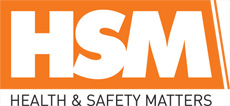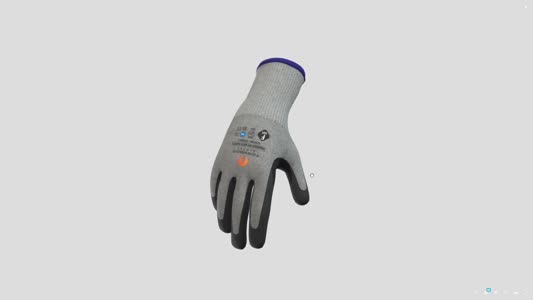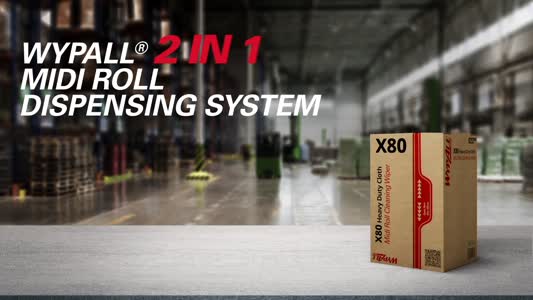
 |
Mark Sennett
Managing Editor |
 |
Kelly Rose
Editor |
| Home> | Managing Health & Safety | >Managing Chemicals | >Don’t let rising temperatures raise your risk |
Don’t let rising temperatures raise your risk
21 August 2025
AS SUMMER temperatures rise, so does the risk of improper chemical storage. A vital but sometimes overlooked aspect of safe storage is temperature control, especially during warmer months when ambient conditions can easily breach safe thresholds.

In this article Mike Brodie explains why it’s vital to take this risk seriously.
Why temperature control cannot be ignored
Every hazardous chemical has specific handling and storage requirements, detailed in its Safety Data Sheet (SDS), particularly in Sections 7 and 9. Yet one of the most common and dangerous oversights is failing to adhere to temperature guidelines.
Storing substances outside their recommended temperature range doesn't just degrade quality; it can pose serious safety hazards. The risk escalates in summer, particularly when containers are exposed to direct sunlight, leading to internal temperatures far above ambient levels.
Real-world risks of poor temperature management
Improper temperature control can cause hazardous materials to degrade, react, or combust. Consider these high-risk examples:
• Organic Peroxides: These highly reactive compounds can enter a runaway reaction above their Self-Accelerating Decomposition Temperature (SADT), producing intense heat and potentially igniting. Fires involving organic peroxides are extremely difficult to control.
• Lithium-Ion Batteries: Widely used in manufacturing, these batteries can experience thermal runaway and explosions when overheated. Non-temperature-controlled storage, particularly in summer, significantly heightens these risks.
• Resins and Adhesives: Common in composite manufacturing, these materials rely on stable temperatures to maintain performance. Excessive heat or cold can alter curing times, reduce bond strength, and cause production failures.
• Pharmaceuticals and Biologicals: These substances often require tight temperature tolerances. Even short-term exposure to incorrect conditions can compromise efficacy or pose health risks.
The dangers of standard steel storage units
One of the most common errors we encounter is the use of standard single-skin steel containers for hazardous material storage. While cost-effective upfront, these units act like greenhouses in the sun, absorbing and radiating heat, often causing internal temperatures to soar well beyond ambient levels. This “oven effect” can turn a seemingly safe environment into a high-risk zone, particularly in summer when solar gain is at its peak.
Fire-rated and climate-controlled storage
Engineered storage systems—fire-rated, insulated, and climate-controlled—offer vital protection for both people and products. These systems typically provide:
• Thermal insulation to prevent heat build-up
• Active climate control to maintain stable conditions
• Certified fire-rated construction for passive fire resistance
• Compliance with HSE regulations and industry best practices
Importantly, there's a distinction between fire-resistant and fire-rated units. Fire-resistant materials may slow flame spread, but fire-rated systems are rigorously tested to withstand extreme heat for defined periods which is critical for temperature-sensitive contents.
Compliance, ATEX Zones, and the importance of proper specification
If you’re storing dangerous, temperature-sensitive substances, it’s essential to carry out a DSEAR assessment (Dangerous Substances and Explosive Atmospheres Regulations). This provides critical guidance on zoning and ensures that any electronic components, such as temperature control systems, are ATEX-rated for use in potentially explosive environments.
Appearances can be deceiving: two storage units may look identical, yet only one may meet ATEX and fire-safety standards. A recurring issue we see is units where fire rating is compromised by penetrations for pipework or cabling, where proper fire-rated lead-through points have not been used. These vulnerabilities can completely undermine the safety integrity of the unit.
Additionally, if you’re storing flammables within a building, you're effectively creating an ATEX zone inside that space. Any openings, such as ventilation grilles or doorways, can extend that zone, meaning any electrical equipment nearby must also be ATEX-rated due to the potential for flammable vapour to migrate into those areas. We've seen cases where companies have invested in compliant storage units, only to compromise safety by placing non-ATEX-rated electronic equipment nearby which is why it’s important to work with expert suppliers who understand this kind of detail.
Tailored solutions for specific needs
Some materials require tight temperature control with minimal fluctuation. Whether storing volatile solvents, sensitive chemicals, or temperature-critical devices, expert suppliers can provide solutions that:
• Maintain precise temperature ranges
• Include remote monitoring and alarms
• Scale modularly with operational growth
Why expert specification matters
Each workplace presents unique hazards and compliance challenges. Off-the-shelf solutions rarely meet the stringent requirements of hazardous material storage.
At Chemstore UK, we go beyond selling storage; we partner with clients to assess risks, understand workflows, and design bespoke, regulation-compliant solutions that safeguard people, property, and the environment.
Don’t let rising temperatures raise your risk. Speak with a Chemstore UK specialist today to find the right temperature-controlled storage for your needs.
Mike Brodie is managing director of Chemstore UK. For more information, visit www.chemstore.co.uk
- Addition to lithium-ion storage range
- Get ready for winter
- Remote monitoring of hazardous materials
- Chemstore launches Electrovault for safe storage of lithium-ion batteries
- Chemstore to launch Chempli
- Fully segregated fire rated storage
- Free chemical storage survey
- Gas cylinder storage
- Chemstore urges review of corrosives storage
- Fire-proof lithium-ion battery box























